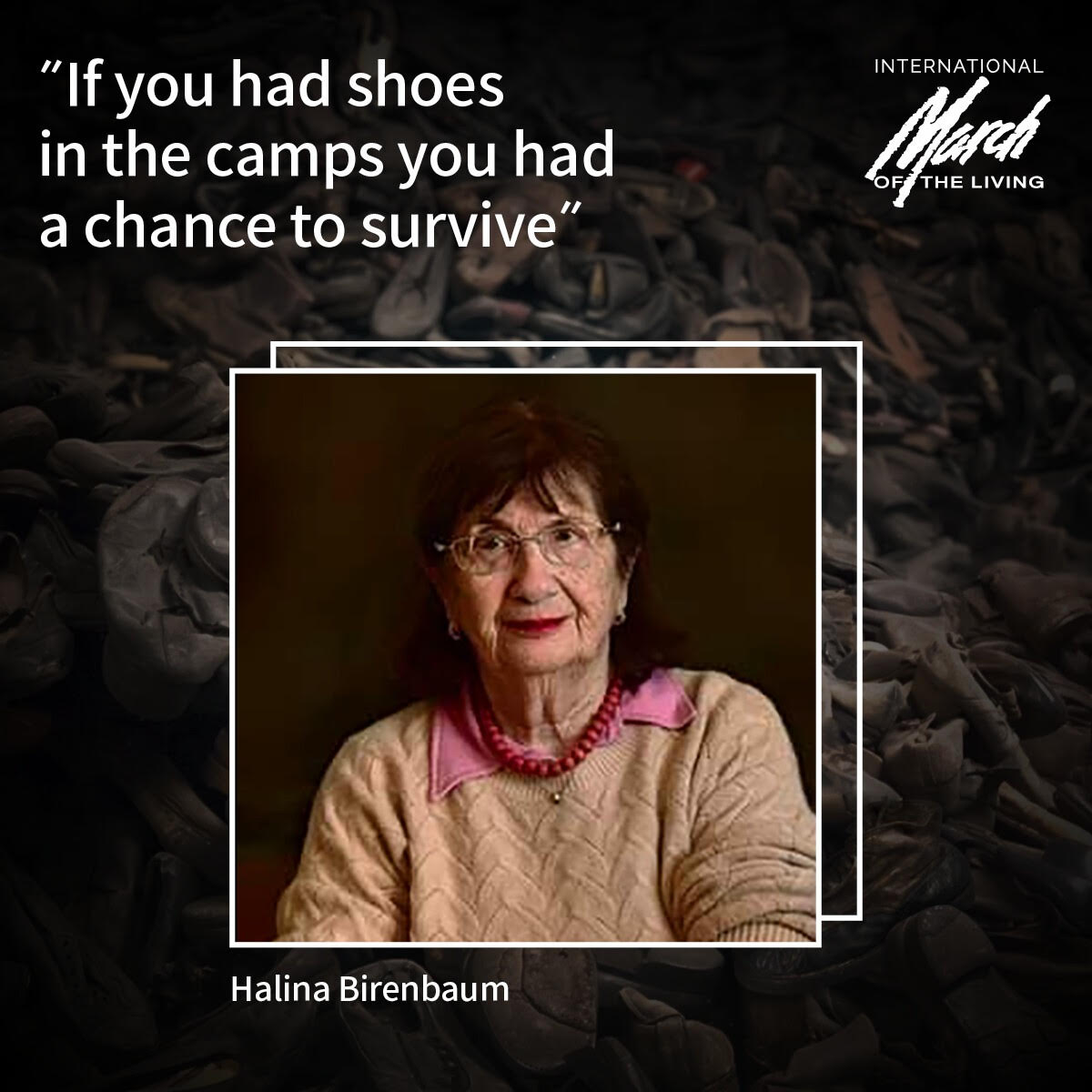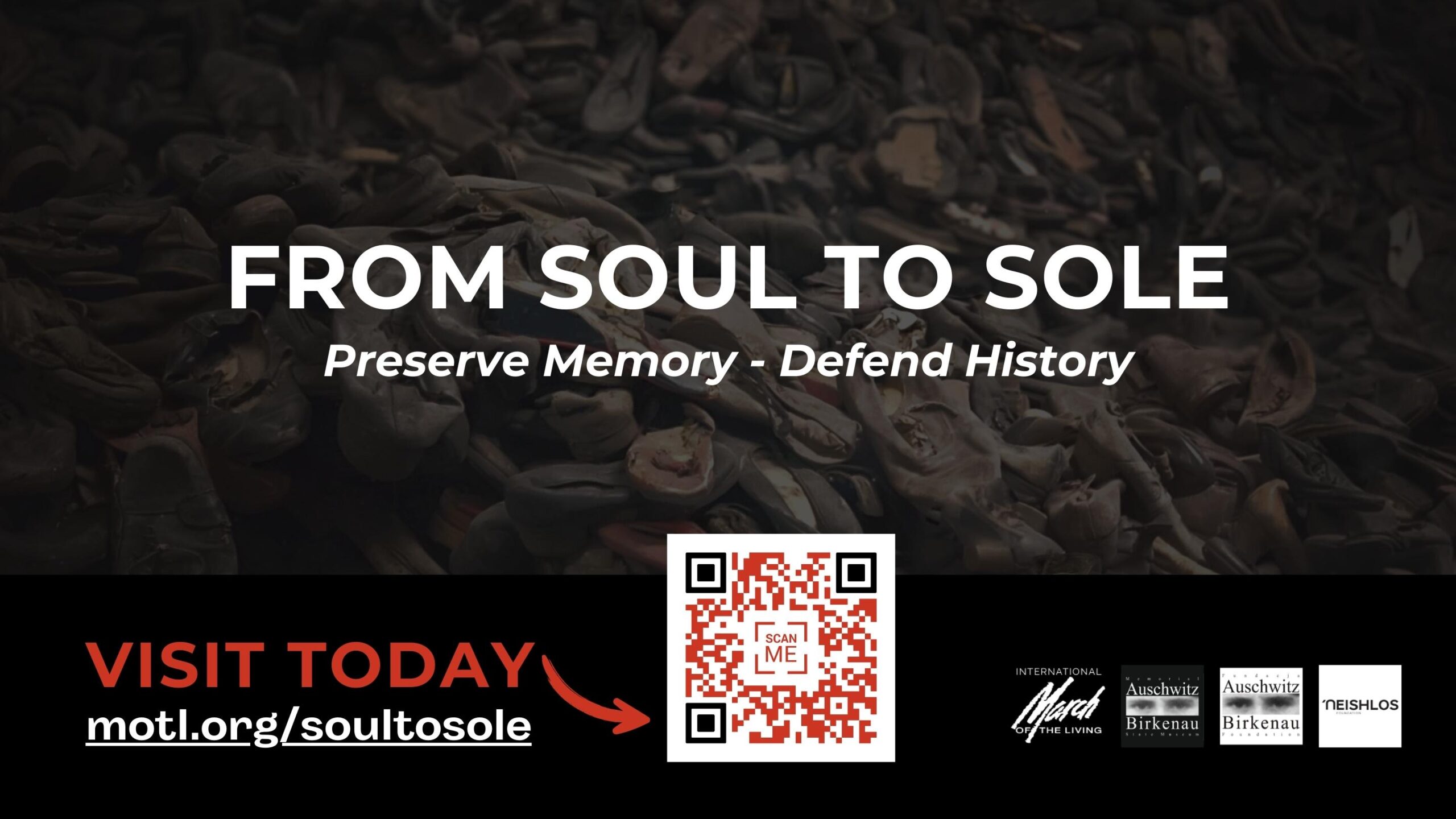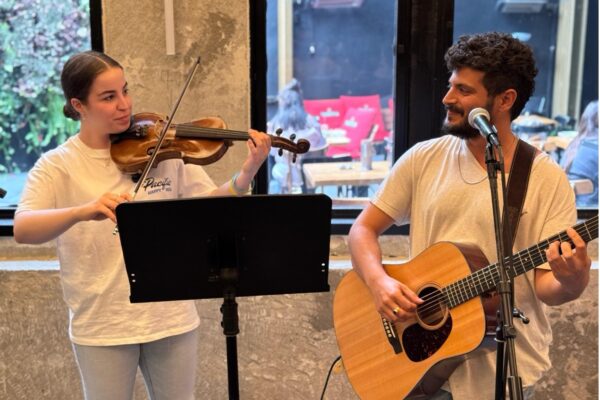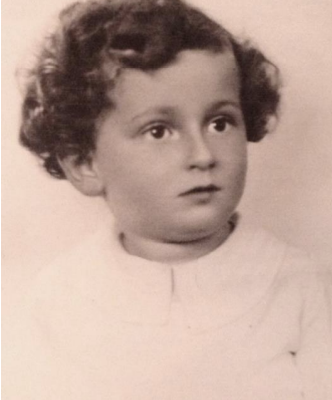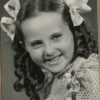“If you had a pair of shoes in the concentration camps, you had the chance to survive. You had a place to hide things. You could be saved from the selection process. Shoes symbolized that you are still alive and demonstrated a type ‘freedom’ where there was none.”
Halina Birenbaum, a Holocaust survivor, born in Poland, a writer, a poet and translator, was only 10 years old when the war erupted. She was transferred to the Warsaw Ghetto and from there to Auschwitz and Majdanek concentration camps. She survived the camps and the death march at the end of the war.
“Soul to Sole” is an educational and fundraising campaign that International March of the Living is running in order to preserve the precious shoes left behind from children murdered in the Holocaust.
To help understand the importance of this campaign, Halina explains just how crucial the shoes were to survival in the concentration camps.
“My story with the shoes started shortly after 1 September 1939. My entire street was lit on fire. I didn’t manage to grab my shoes in time, so my father put them in his jacket pocket and ran out of the house. Next thing we know, we were in the Majdanek concentration camp. I pulled myself out of from the train cart, from under a crowd of people lying on top of me. The shoes were stuck under the crowd of people. I came out of the train cart with no shoes. We had to run but I could barely walk. Next to me they shot a woman dead on the spot. Quickly, my mother took off her high-heeled shoes and gave them to me so that I would appear older, since the Germans took small children right away to death chambers. Because I did not know how to wear heels, my brother took one of the shoes and broke off the high heel part, he did not manage to break off the second one in time as we were instantly separated in that moment. I then limped into Majdanek camp. An SS officer saw that one of the heels was missing on my shoes and blamed the limping on that, letting my pass through to the working camp and not to the death camp. Those shoes came with me to Auschwitz. They were stolen twice in Auschwitz.
In the middle of the night, they took us to be sanitized and disinfected. They didn’t leave us anything from what we came with. There was a lovely woman there, like a mother to me, who I had a great relationship with. She was in charge of our block, she made sure I got clothes and a pair of shoes. But that did not last long. The shoes were stolen again, this time in the shower. The woman who helped me earlier then reprimanded me and said “How are you letting people steal your shoes, twice! You are not looking after them. This is the third time; I refuse to give you new ones”. I took the first shoes in line and went with them. It stood in a row, and I just took them. That was my first mistake.
Within the camps, no one had the right size shoe for their feet. The shoes were made of wood. Small shoes were constantly being stolen because larger shoes would destroy your feet. Smaller shoes were an actual blessing. Most of the time shoes would determine if you would survive or not.
In the camp, I worked in an area called “Canada”. Every day I walked for 3 kilometers with the wide and massive shoes on my feet. When I got there, I would throw them away and get each of my friends a shoe in the right size so they can feel a real shoe on their feet finally. The women who gave me the job, she herself had smaller shoes. I walked for 3 kilometers to ‘Canada’ with her shoes. With my big shoes, I would hide underwear, undershirts, pieces of soap even. No one thought to check which shoes I was wearing and thanks to the big shoes I was able to transfer items.”
“Even in our dreams,” remembers Halina, “every time we would dream about the shoes, it was a sign of freedom. A sign of being set free. We would be jealous of anyone who even dreamt about shoes, and tell her ‘How nice for you, you dreamt about being free’”.
“When the freedom finally came (when the camp was liberated in 1945) I did not know what to do. I couldn’t even be happy with this unfamiliar freedom that was given to me. Suddenly, I felt all the pain and suffering that was in me until the moment of being released. I did not know where I was going. Who I belonged to, or who I even was anymore. In the last few years so many people that I knew and lived amongst had died from hunger, illness or complete exhaustion. I witnessed crowds of people suffocating from gas and being burnt in front of my eyes, as I sorted through the clothes they just removed, still warm from their body heat. And here I am, like a piece of dust they didn’t broom away, somehow stayed alive one day and then the next, and the next.”
The poem “Ashes and Dust” was written by Helina’s son Yaakov Gilad inspired by his mothers’ stories.
Join our “Soul to Sole” campaign to help preserve the shoes of the thousands of innocent children so brutally murdered in Auschwitz-Birkenau. These precious shoes are the only tangible evidence we have left of their memory. Donate Now!
